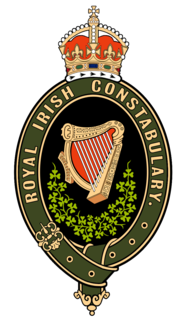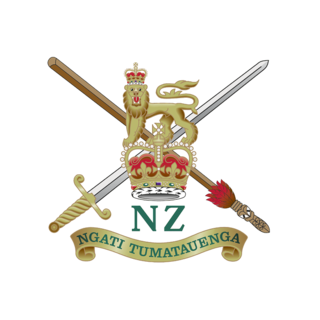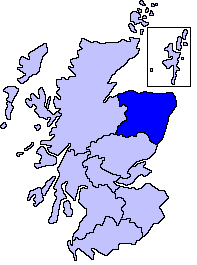
The Bulgarian Army is the military of Bulgaria. The commander-in-chief is the president of Bulgaria, who since January 2017 is Rumen Radev. The Ministry of Defense is responsible for political leadership, while overall military command is in the hands of the Defense Staff, headed by the Chief of the Defense. There are three main branches of the Bulgarian military, named literally the Land Forces, the Air Forces and the Naval Forces.

The New Zealand Defence Force are the armed forces of New Zealand. The NZDF is responsible for the protection of the national security of New Zealand and her realm, promoting its interests, safeguarding peace and security, as well as supporting peacekeeping and humanitarian missions. It consists of three services: the Royal New Zealand Navy (RNZN), the New Zealand Army and the Royal New Zealand Air Force (RNZAF), as well as 'tri-service' components. The NZDF has a strength of 15,538 made up of 9,478 regular force personnel, 3,064 reserve force personnel and 2,996 civilian members. It is supported by the New Zealand Ministry of Defence (MOD) and is commanded by the Chief of Defence Force (CDF).

The Philippine Constabulary was a gendarmerie-type police force of the Philippines from 1901 to 1991, and the predecessor to the Philippine National Police. It was created by the American colonial government to replace the Spanish colonial Guardia Civil, happened on the 19th century history of the Philippines. It was the first of the four branches of the Armed Forces of the Philippines. On January 29, 1991, it was merged with the Integrated National Police to form the Philippine National Police.

The Royal Irish Constabulary was the police force in Ireland from 1822 until 1922, when all of the country was part of the United Kingdom. A separate civic police force, the unarmed Dublin Metropolitan Police (DMP), patrolled the capital and parts of County Wicklow, while the cities of Derry and Belfast, originally with their own police forces, later had special divisions within the RIC. For most of its history, the ethnic and religious makeup of the RIC broadly matched that of the Irish population, although Anglo-Irish Protestants were over-represented among its senior officers.

Military police (MP) are law enforcement agencies connected with, or part of, the military of a state.

A gendarmerie is a military force with law enforcement duties among the civilian population. The term gendarme is derived from the medieval French expression gens d'armes, which translates to "men-at-arms". In France and some Francophone nations, the gendarmerie is a branch of the armed forces that is responsible for internal security in parts of the territory, with additional duties as military police for the armed forces. It was introduced to several other Western European countries during the Napoleonic conquests. In the mid-twentieth century, a number of former French mandates and colonial possessions adopted a gendarmerie after independence. A similar concept exists in Eastern Europe in the form of Internal Troops, which are present in many countries of the former Soviet Union and its former allied countries.
The Criminal Investigation Department (CID) is the branch of a police force to which most plainclothes detectives belong in the United Kingdom and many Commonwealth nations. A force's CID is distinct from its Special Branch. The name derives from the CID of the Metropolitan Police, formed on 8 April 1878 by C. E. Howard Vincent as a re-formation of its Detective Branch. British colonial police forces all over the world adopted the terminology developed in the UK in the 19th and early 20th centuries, and later the police forces of those countries often retained it after independence. English-language media often use "CID" as a translation to refer to comparable organisations in other countries.
A police authority in the United Kingdom is a public authority that is responsible for overseeing the operations of a police force. The nature and composition of police authorities has varied over time, and there are now just four dedicated "police authorities" in the United Kingdom, although the term can refer to various similar successor bodies.

The New Zealand Army is the land component of the New Zealand Defence Force and comprises around 4,659 Regular Force personnel and 2,122 Reserve Force personnel. Formerly the New Zealand Military Forces, the current name was adopted by the New Zealand Army Act 1950. The New Zealand Army traces its history from settler militia raised in 1845.

Grampian Police was, between 1975 and 2013, the territorial police force of the northeast region of Scotland, covering the council areas of Aberdeenshire, the City of Aberdeen, and Moray. The Force area also covered some of the North Sea, giving Grampian Police the responsibility of policing the oil and gas platforms of the North East. The force was headquartered in Aberdeen.

Auxiliaries are support personnel that assist the military or police but are organised differently from regular forces. Auxiliary may be military volunteers undertaking support functions or performing certain duties such as garrison troops, usually on a part-time basis. Unlike a military reserve force, an auxiliary force does not necessarily have the same degree of training or ranking structure as regular soldiers, and it may or may not be integrated into a fighting force. Some auxiliaries, however, are militias composed of former active duty military personnel and actually have better training and combat experience than their regular counterparts.
The Paramilitary forces of Pakistan consist of various uniformed organizations that are sanctioned by the Pakistani constitution and government. The paramilitary forces are responsible for maintaining internal peace and security, helping local law enforcement agencies, and carrying out border patrol, counter-insurgency, counter-terrorism, riot control and anti-smuggling operations under the Ministry of Interior. The paramilitary forces not formally a part of Pakistan Armed Forces, but sometimes working alongside them to provide security and relief in response to natural disasters. The paramilitary forces come's under the direct command of Ministry of Defense and Armed Forces in War times.

The Air Force Department Constabulary was a police force in the United Kingdom, responsible for policing the airfields and aerodromes under the control of the Air Ministry, later the Air Force Department.

The Admiralty Constabulary was a police force in the United Kingdom formed under the Special Constables Act 1923 which existed from 1949 to 1971.

The Ministry of Defence, is an executive ministry of the Government of Pakistan, tasked in defending Pakistan's national interests and values at home and abroad. It plays a major supporting role to the Pakistan Armed Forces and coordinates with a range of domestic, foreign and inter-governmental bodies.
The Ministry of Defence Police (MDP) in the United Kingdom can trace its origins back to 1686, and has gone through a number of evolutions over the centuries to achieve its present-day form. Until late 1965, the Royal Navy, British Army and Royal Air Force were controlled by separate departments: the Board of Admiralty, the Army Board and the Air Ministry respectively, each had its own Cabinet Minister. In that year it was decided that the three services should be placed under the control of one Minister of State for Defence, and the present Ministry of Defence was formed.

The Ministry of Defence Police (MDP) is a civilian special police force which is part of the United Kingdom's Ministry of Defence. The MDP's primary responsibilities are to provide armed security and counter terrorism services to designated high-risk areas, as well as uniformed policing and limited investigative services to Ministry of Defence property, personnel, and installations throughout the United Kingdom. The MDP are not military police and should not be confused with the Royal Military Police or any other British Service Police. Service personnel often refer to the MDP by the nickname "MOD plod".
The Ministry of Defence (MoD) is a Bangladeshi government ministry. It is the ministry of defence of Bangladesh. The MoD is headed by the Minister of Defence, a civilian and member of cabinet; the post is usually held by the Prime Minister of Bangladesh, who also serves as the President's second-in-command of the military. The MoD exercises supreme command authority over the Bangladesh Armed Forces.













